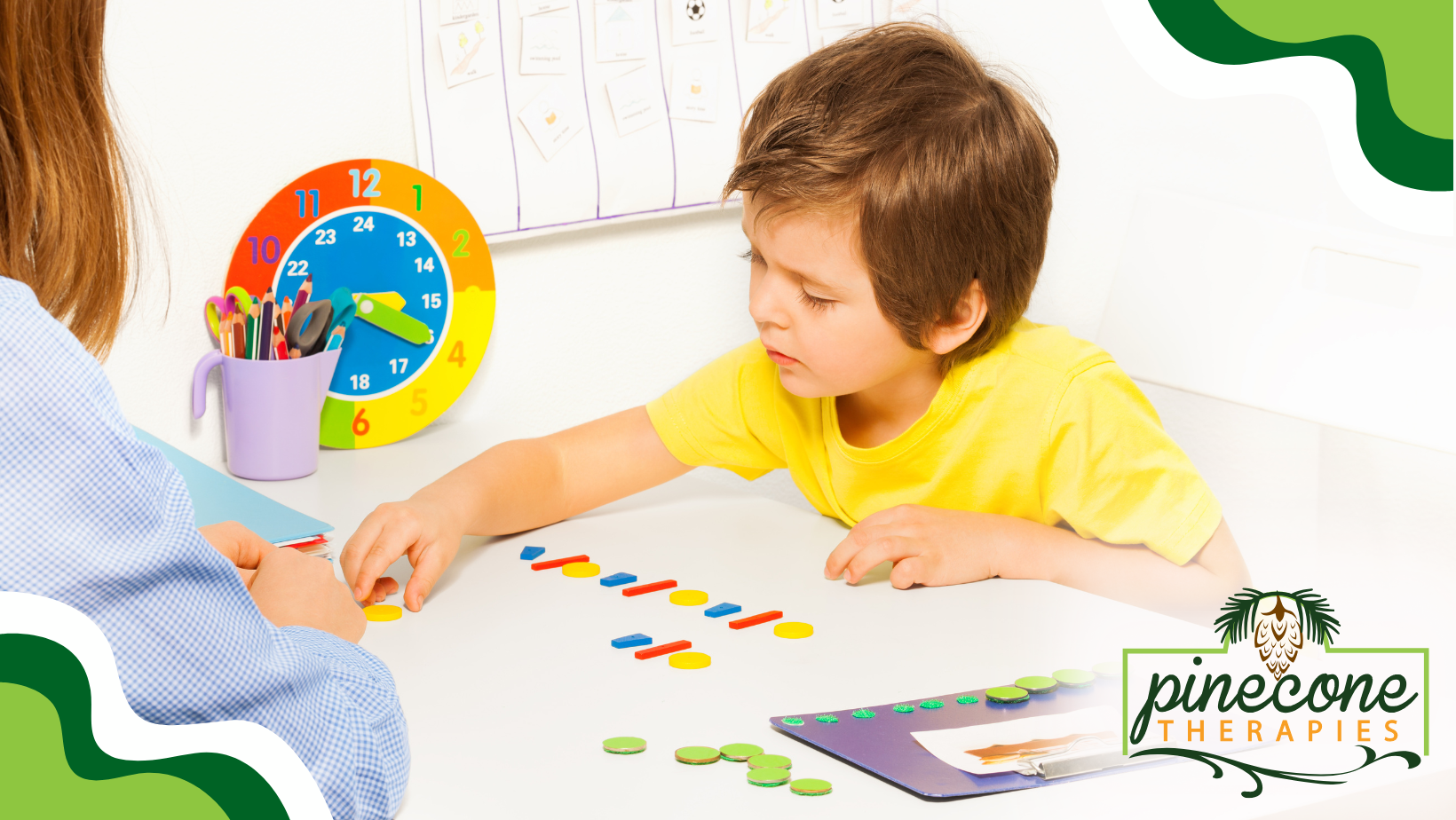Receiving an autism spectrum disorder (ASD) diagnosis for your child may bring relief—knowing what’s going on—but also questions: What now? How can we support our child’s growth? At Pine Cone Therapies, we view the diagnosis not as an endpoint, but as the beginning of a journey toward personalized early intervention, development, and confidence.
Understanding Autism Spectrum Disorder
Autism Spectrum Disorder (ASD) is a complex neurological and developmental condition that influences how a person communicates, interacts, learns, and behaves. Because it is a spectrum disorder, each individual with autism experiences a unique combination of strengths and challenges—no two people are exactly alike. Understanding this broad range of differences is essential for families, educators, and healthcare professionals to provide the most effective support and treatment.
Research shows that early intervention and accurate diagnosis can make a meaningful change in a child’s development and long-term well-being. Healthcare professionals—including child psychiatrists, psychologists, and developmental pediatricians—play a vital role in identifying the signs of autism and guiding families toward the right interventions. By recognizing the early signs and seeking support, families can help their child build essential skills and access resources that foster growth and independence.
Learning about autism spectrum disorder empowers families to advocate for their child, communicate effectively with care teams, and make informed decisions about treatment options. The more you understand about ASD, the better equipped you’ll be to support your child’s journey.
What to Expect After an Autism Evaluation
After an evaluation for autism spectrum disorder (ASD), you’ll receive a detailed report outlining the findings. This report is more than just test scores—it’s a roadmap that provides insight into your child’s unique strengths and challenges.
Here are the key elements you can expect from the results and follow-up process:
- Clear Diagnosis or Ruling Out
If autism spectrum disorder (ASD) has been identified, the report will explain its severity level and provide guidance on areas that require the most support. If autism is ruled out, the report may identify other developmental disorders, developmental delays, attention deficit hyperactivity disorder (ADHD), or learning differences.
- Tailored Recommendations
Every evaluation concludes with a customized set of recommendations. These might include therapies like ABA, occupational therapy, speech therapy, or physical therapy, behavioral interventions, educational accommodations, social skills groups, or lifestyle adjustments to help your child thrive. Treatments are tailored to address your child's specific developmental delays and symptoms. These recommendations serve as the foundation for your child’s autism treatment plan.
- Collaborative Action Plan
The next step involves collaboration with your child’s care team—therapists, healthcare professionals, educators, and, of course, you. Together, you’ll set developmentally appropriate goals to support your child’s learning and growth.
Remember, an autism diagnosis isn’t a label—it’s a springboard to accessing the right resources and most effective treatments to help your child succeed.
Next Steps for Families
1. Begin Autism Therapy and Interventions Early
Early intervention is the key to unlocking your child’s potential. Research shows that the earlier a child receives support, the greater their chances of reaching developmental milestones. Based on your child’s needs, treatment options may include:
- Applied Behavior Analysis (ABA): An evidence-based approach focusing on decreasing challenging behaviors, developing communication, and nurturing social skills in a structured environment.
- Speech and Feeding Therapy: Helps enhance social communication skills and language skills, enabling your child to express their needs and emotions.
- Occupational Therapy (OT): Focuses on improving fine motor skills, sensory integration, and daily living skills like dressing or using utensils.
- School Readiness Program: Half-day therapeutic preschool experience for children with autism, designed to build the routines, confidence, and foundational skills that help children thrive in classroom settings and beyond.
Pine Cone Therapies offers all of these services under one roof, creating a streamlined, personalized therapy plan that evolves with your child's needs and can be implemented in natural settings to support generalization of skills.
2. Explore Educational Support Plans
Your child’s autism diagnosis can qualify them for special education support through your local school district. These services ensure your child receives the accommodations they need to thrive in an educational setting.
Common school-based supports include:
- Individualized Education Programs (IEP): A tailored plan that outlines specific goals and services your child will receive in their educational setting.
- 504 Plan: If less extensive accommodations are needed, a 504 Plan can make education more accessible.
- Collaboration with Educators: Engaging with teachers and school staff ensures they understand your child’s unique learning style and needs.
3. Access Parent Training and Family Counseling
Parenting an autistic child comes with its own set of challenges, but you’re not alone. Parents play a crucial role in supporting their child's development, and being actively involved in therapy and support can make a significant difference. Family counseling and parent training can provide emotional support and practical tools to foster a nurturing environment at home.
These services provide:
- Tools for managing behaviors at home
- Education about autism and how it affects your child's needs and development
- Strategies for daily routines, transitions, and communication
- Emotional support for navigating the journey ahead
- Strengthening family dynamics
- Teaching behavioral strategies for parents to use with their child
- Building a network of support and additional resources through parent groups or counseling
4. Prioritize Self-Care
Caring for an autistic child requires tremendous energy, patience, and resilience. Prioritizing self-care for caregivers is essential—not selfish. Whether it’s joining a support group, seeking respite services, or scheduling time to recharge, your well-being as a caregiver is important for your entire family. When you’re supported and well-rested, you’re better equipped to help your child.
How Pine Cone Therapies Supports You
Integrated, Interdisciplinary Care Under One Roof
We bring together ABA, speech, and occupational therapy so you don't need to coordinate services across providers.
A Treatment Plan That Evolves
Care plans are living plans: goals, hours, and supports shift as your child grows. We review progress regularly, adjusting the intensity and focus to continue building greater independence.
Parent and Family Involvement is Core
You’re an essential part of the team: collaborating in goal setting, receiving training, and carrying strategies into daily routines. Your voice and insight guide therapy every step of the way
Your Partner on This Journey
Autism is a part of your child’s story—but it’s not the whole story. With the right support, they can achieve incredible growth and lead a fulfilling life. At Pine Cone Therapies, we’re here to walk alongside your family from that very first evaluation to every milestone ahead. If you're wondering what to do after your child’s autism diagnosis, we’re ready to help.
If your family is ready to explore the next steps for therapy, contact Pine Cone Therapies to begin your seamless transition from evaluation to care. You’re not alone—together, we help each child grow, connect, and thrive.








